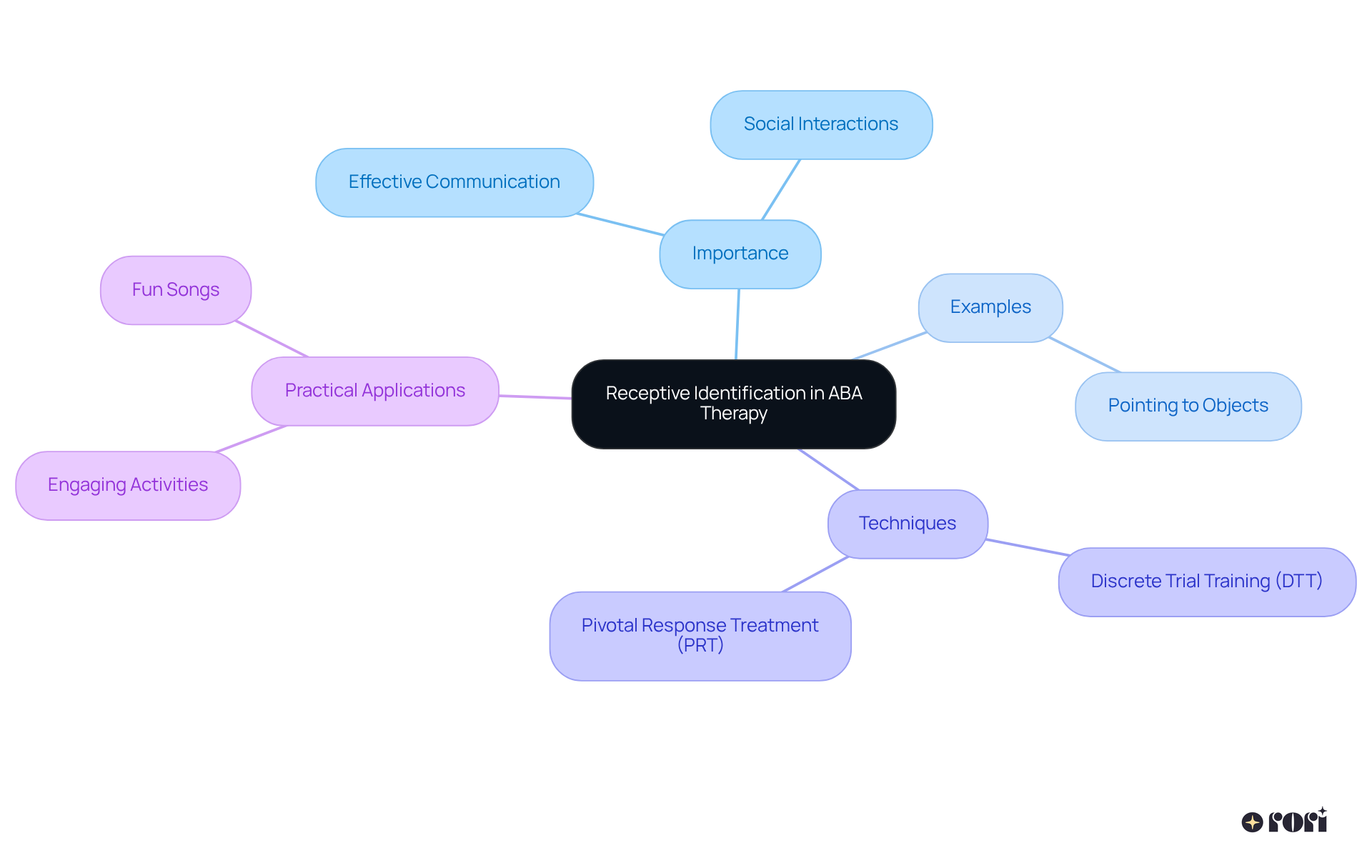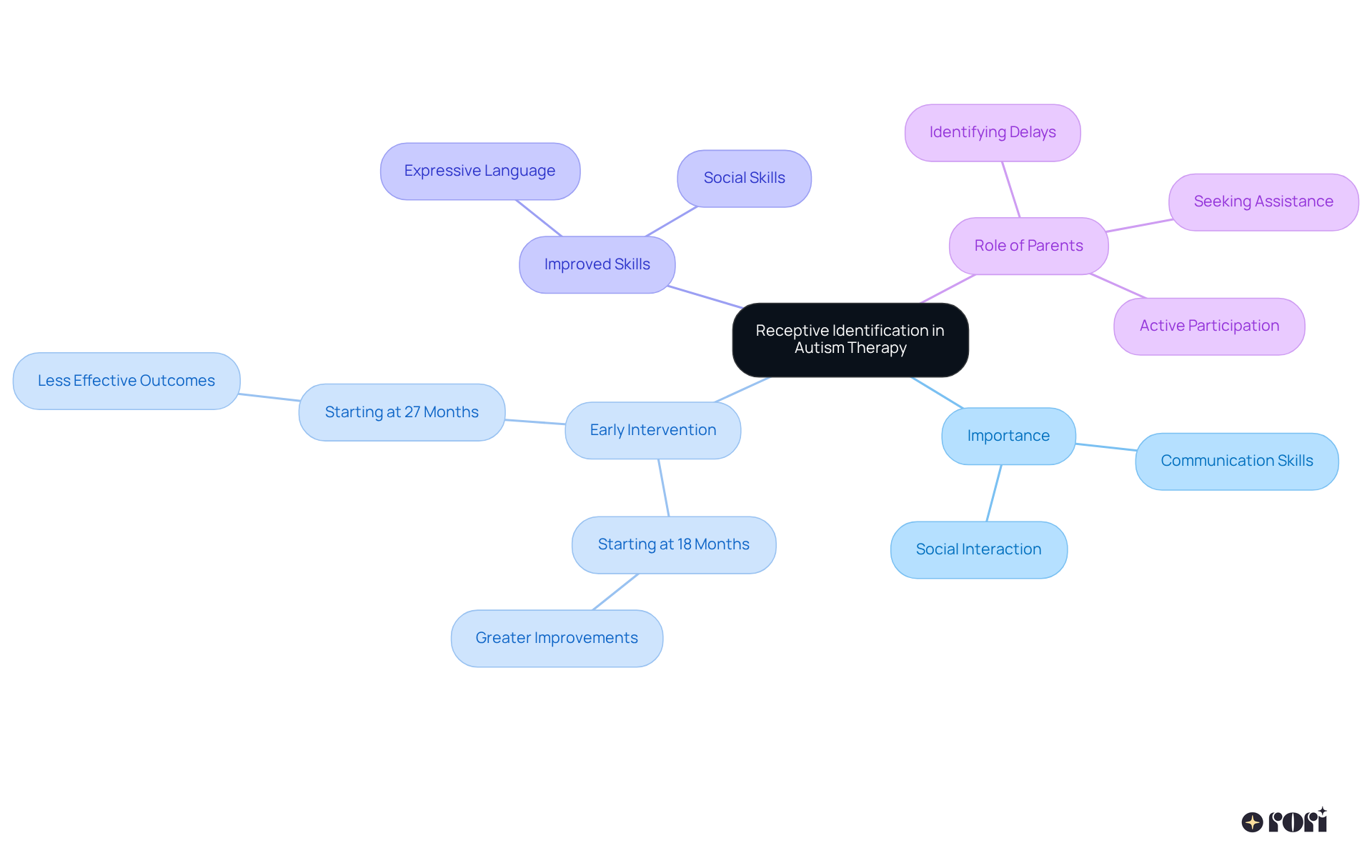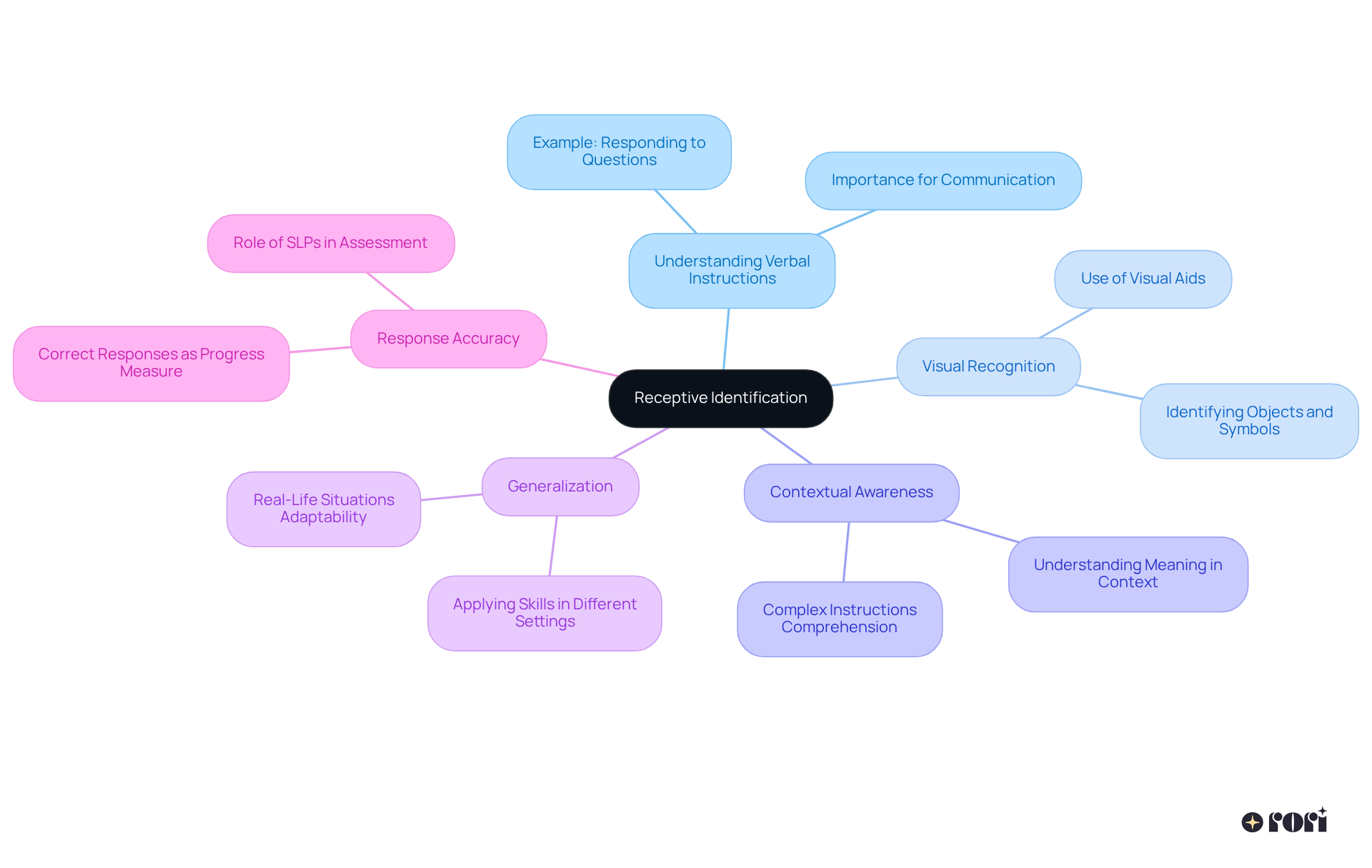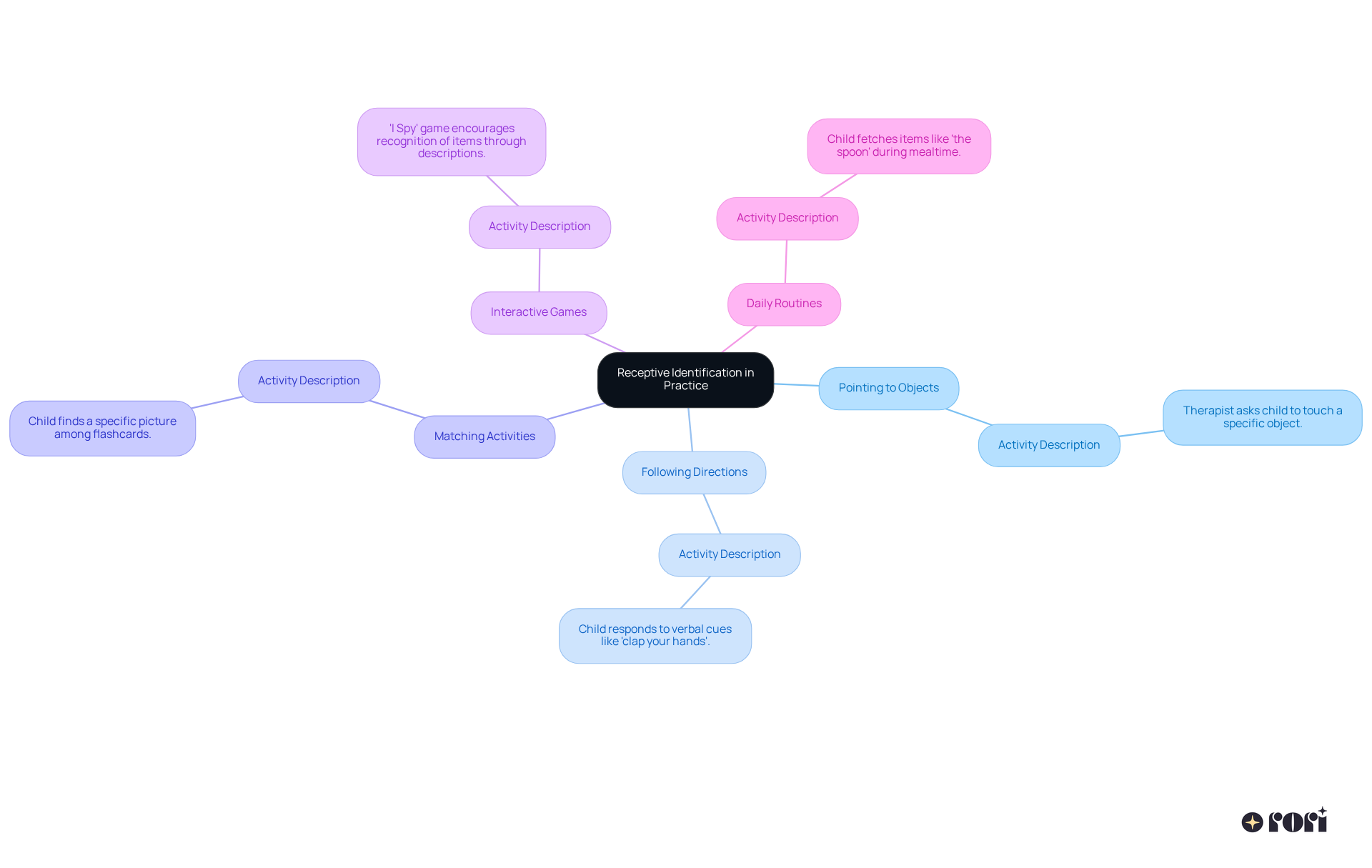Receptive identification in ABA therapy for autism is so important! It helps children understand and respond to verbal instructions by recognizing objects, pictures, or symbols. This skill lays the groundwork for effective communication and social interactions. 🌟
When children master this ability, they not only follow directions better but also engage more meaningfully with their environment. Plus, it’s linked to significant improvements in language and social skills, especially when targeted through early and intensive intervention methods. Let’s explore this together and see how we can support our little ones on their journey!
Understanding how children with autism engage with their environment can truly transform their development. 🌟 Receptive identification in Applied Behavior Analysis (ABA) therapy plays a crucial role in enhancing communication skills and social interactions. It serves as a foundational element for effective learning. As children learn to recognize and respond to verbal cues, they unlock a world of opportunities for connection and independence.
But what happens when these skills are not fully developed? 🤔 How can caregivers and therapists work together to bridge this gap and foster meaningful progress? Let’s explore this together!
Receptive identification ABA in therapy is all about a young person's ability to understand and respond to verbal directions by recognizing objects, pictures, or symbols. This skill is super important for effective communication, helping kids follow instructions and connect with their surroundings. For example, when a therapist says, 'point to the apple,' the child's ability to identify the right object demonstrates their proficiency in receptive identification ABA. This is especially vital for kids on the autism spectrum, as receptive identification ABA lays the groundwork for further language development and social interactions.
Did you know that studies suggest around 40-50% of kids in intensive ABA therapy gain skills that help them live independently and engage socially? Strong identification skills, particularly receptive identification ABA, are key for everyday interactions, enabling children to respond appropriately to requests and engage meaningfully with others. Techniques like Discrete Trial Training (DTT) and Pivotal Response Treatment (PRT) focus on enhancing these skills, emphasizing practical language that children encounter in their daily lives, including functional terms like 'open,' 'shut,' 'up,' and 'down.'
Plus, incorporating fun activities and visual aids, like picture exchange systems, can significantly boost a child's language comprehension. Engaging kids with simple phrases during play not only enhances their understanding but also strengthens the bond between parent and child. Catchy songs like 'Baby Shark' and 'Wheels on the Bus' can be fantastic tools for improving language understanding through repetition and gestures. By prioritizing functional language and everyday vocabulary, parents can help their kids better grasp and follow simple directions, making daily life smoother for everyone. As Heather Gilmore, MSW, BCBA, wisely notes, "If the child does not possess effective understanding skills, he will not be able to engage in this interaction with his mother as well as numerous other moments and experiences of usual daily activities." Let’s explore this together!

Receptive recognition plays a vital role in autism therapy, serving as a foundation for effective communication and social interaction. When children excel in understanding, they can better comprehend and respond to verbal signals, which significantly enhances their ability to learn and navigate their surroundings. This skill is essential for following instructions, engaging in group activities, and forming social connections.
Research indicates that toddlers who begin intensive interventions early—especially those focusing on receptive identification aba—show remarkable improvements in both receptive and expressive language skills. For instance, children receiving intensive early intervention at just 18 months tend to perform better than those starting at 27 months. A study involving 82 autistic toddlers highlighted that those participating in an intensive early intervention program made greater strides in communication and social skills compared to their peers who started later.
By enhancing receptive identification, children not only learn to express their needs and thoughts more effectively but also cultivate better social interactions. This area becomes a central focus in Applied Behavior Analysis (ABA) therapy, specifically in the implementation of receptive identification aba, where practitioners use structured interventions and consistent practice to nurture these vital skills.
Rori Behavioral Innovations Inc. takes a comprehensive approach, emphasizing the importance of diagnosing and personalizing care, improving behavior, developing social skills, and fostering independence. As parents, you play a crucial role in identifying developmental delays and seeking assistance, ensuring that your little ones receive the support they need. As Federica Brancati beautifully puts it, 'Clear modeling of communication is the foundation for effective interaction in young individuals.'
Let’s explore this together! Your involvement is key to making a difference in your child's journey.

Key characteristics of receptive identification include:
Understanding Verbal Instructions: This is all about how well a child can grasp spoken language and follow directions. For instance, when asked, 'What is your favorite color?', a child's ability to respond shows their understanding. Mastering this skill is super important for achieving receptive identification aba in both effective communication and learning.
Visual Recognition: Children often show their identification skills by recognizing objects, pictures, or symbols when prompted verbally. Using visual aids during instructions can significantly support kids with receptive identification aba, making it easier for them to point out or select the right item from a group.
Contextual Awareness: It's essential for kids to know that the meaning of words can change depending on the context. This skill helps them understand more complex instructions and boosts their overall comprehension. Early intervention can really help nurture the skills related to receptive identification aba!
Generalization: This refers to a child's ability to apply what they've learned about recognizing stimuli in different settings and with various inputs. It's a key trait for adaptability, ensuring that children can use their skills in real-life situations. Early intervention methods support both expressive language growth and receptive identification aba, reinforcing this important characteristic.
Response Accuracy: When a child can respond correctly to prompts, it shows they've mastered their receptive identification skills. Accurate responses are a key measure of progress in therapy through receptive identification aba, helping tailor interventions to meet individual needs. Speech-Language Pathologists (SLPs) play a crucial role in assessing these skills and ensuring effective support.
These characteristics are vital for evaluating a young person's progress in therapy, ensuring that interventions are tailored to effectively support their development. Let’s explore this together and see how we can help your child thrive!

Let’s dive into some fun examples of receptive identification in practice!
Pointing to Objects: Imagine a therapist asking a little one to 'touch the red ball' while surrounded by a bunch of toys. When the child locates and touches the right item, it’s a wonderful demonstration of receptive identification!
Following Directions: During a playful activity, a therapist might say, 'clap your hands' or 'jump up.' This is a great way to see how well the child understands and acts on those verbal cues.
Matching Activities: Using colorful flashcards, a therapist can ask a young learner to 'find the picture of the cat' among several images. This activity really helps reinforce their ability to identify and match visual stimuli with verbal prompts.
Interactive Games: Games like 'I Spy' are perfect for motivating kids to recognize items around them using verbal descriptions. It makes understanding language fun and engaging!
Daily Routines: We can even weave skill recognition into everyday tasks. For example, asking a little one to 'fetch the spoon' during mealtime can really help reinforce these abilities in a natural and relaxed setting.
These examples demonstrate how receptive identification aba can be integrated into various therapeutic approaches, making learning and communication enjoyable for children with autism. Let’s explore this together!

Receptive identification ABA therapy is such an important foundation for children with autism! It helps them understand and respond to verbal cues, which makes a big difference in how they engage with their surroundings and communicate. These skills are essential for social interactions and daily life.
This article really highlights how crucial receptive identification is in autism therapy. It plays a key role in developing language and social skills. Techniques like Discrete Trial Training and Pivotal Response Treatment are fantastic for enhancing these abilities. Plus, incorporating fun activities and visual aids can really support children's learning. Early intervention, as mentioned, can lead to significant improvements in both receptive and expressive language, showing just how vital timely support is.
Ultimately, focusing on receptive identification not only helps the individual child but also enriches family dynamics and social connections. Parents and caregivers are encouraged to actively engage in their child's learning journey, using enjoyable methods and structured interventions to promote growth. By recognizing the value of receptive identification, families can make a huge difference in their children's development, paving the way for a brighter, more communicative future. Let’s explore this together and see how we can support each other on this journey!
What is receptive identification in ABA therapy?
Receptive identification in ABA therapy refers to a young person's ability to understand and respond to verbal directions by recognizing objects, pictures, or symbols. It is crucial for effective communication and helps children follow instructions and connect with their surroundings.
Why is receptive identification important for children on the autism spectrum?
Receptive identification is vital for children on the autism spectrum as it lays the groundwork for further language development and social interactions. It enables them to respond appropriately to requests and engage meaningfully with others.
What percentage of children in intensive ABA therapy gain skills for independent living and social engagement?
Studies suggest that around 40-50% of children in intensive ABA therapy gain skills that help them live independently and engage socially.
What techniques are used to enhance receptive identification skills?
Techniques such as Discrete Trial Training (DTT) and Pivotal Response Treatment (PRT) are used to enhance receptive identification skills, focusing on practical language that children encounter in their daily lives.
How can fun activities and visual aids improve a child's language comprehension?
Incorporating fun activities and visual aids, like picture exchange systems, can significantly boost a child's language comprehension. Engaging children with simple phrases during play enhances their understanding and strengthens the bond between parent and child.
What role do catchy songs play in improving language understanding?
Catchy songs like 'Baby Shark' and 'Wheels on the Bus' can be effective tools for improving language understanding through repetition and gestures, making learning more engaging for children.
How can parents help their children grasp and follow simple directions?
By prioritizing functional language and everyday vocabulary, parents can help their children better understand and follow simple directions, making daily life smoother for everyone.